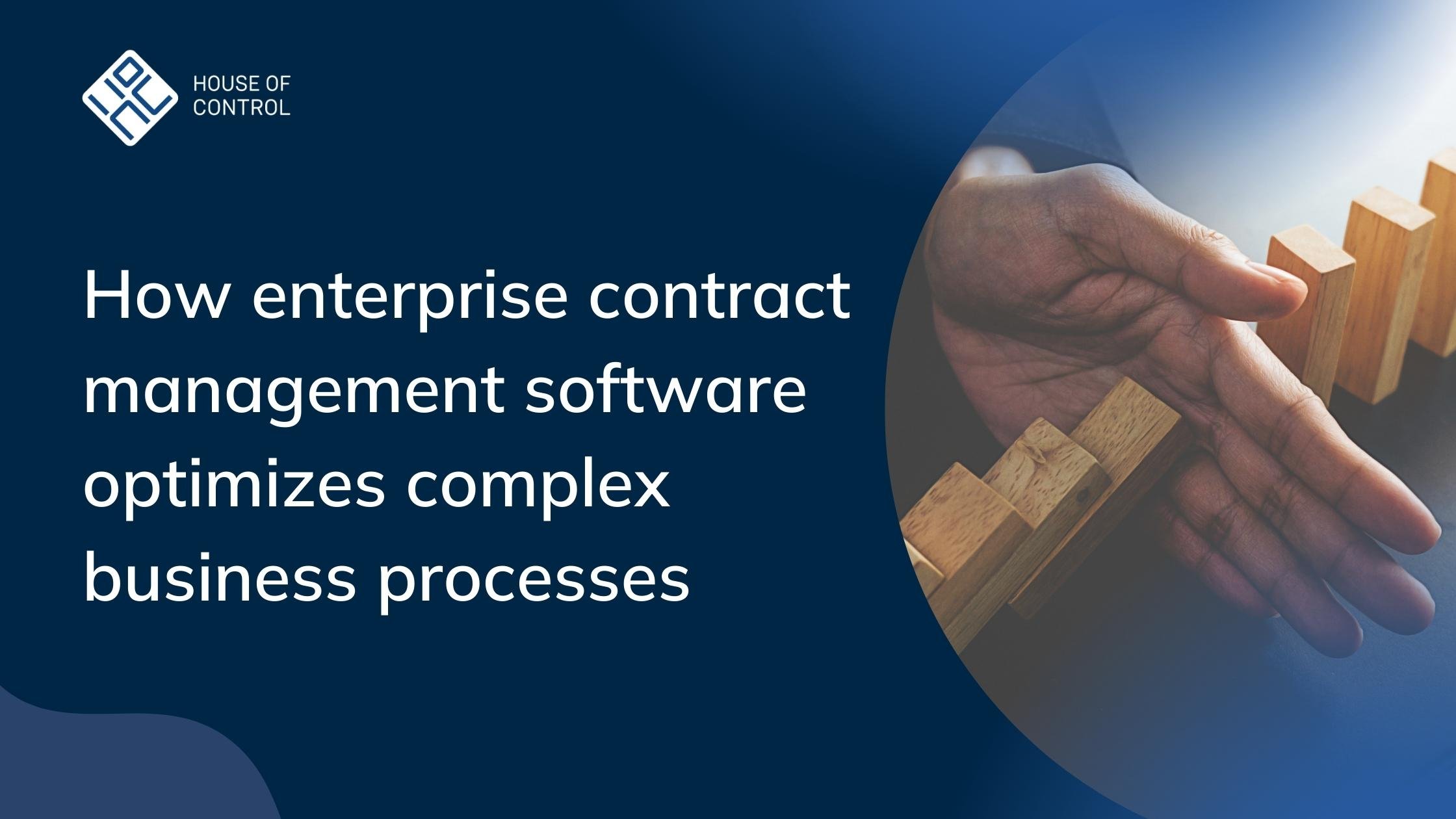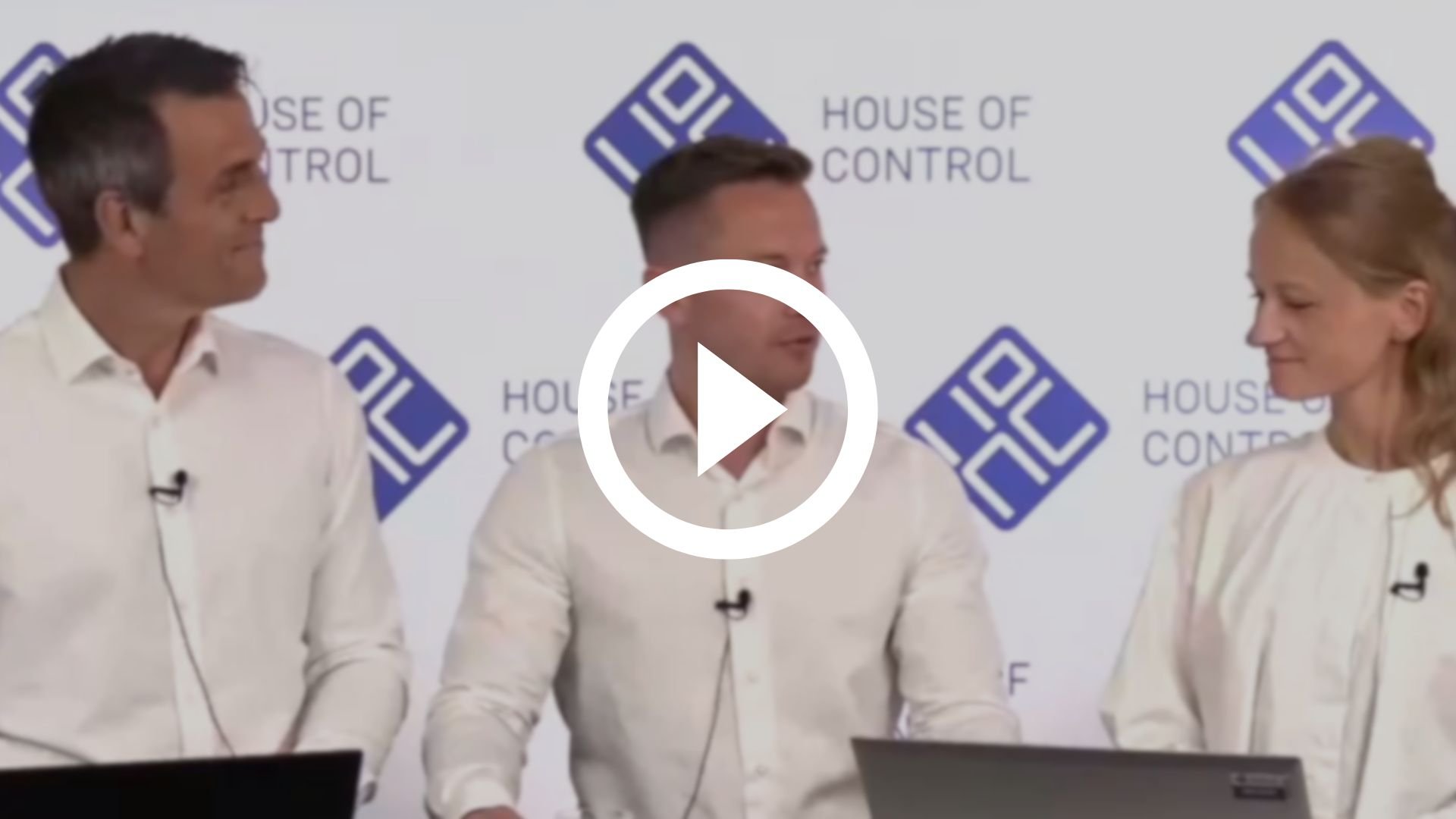How enterprise contract management software optimizes complex business processes
There is a relatively new name on just about any CFO’s digital roadmap: Contract Lifecycle Management (CLM) software is helping large companies cut costs, reduce risk and improve compliance.

Enterprise software are applications designed for larger organizations, typically with more than a thousand employees. The purpose is to help the company manage and automate various business processes.
Familiar processes are human resources, financial management, customer relationship management, and supply chain management. Contract management and contract lifecycle management (CLM) are other examples – and the ones we will focus on in this article.
What is enterprise contract management software
Enterprise contract management software is acquired by companies that need sophisticated technology solutions to support their contract management processes. It is a centralized solution that allows large businesses to manage, collaborate, report, and track their contracts as well as contract creation. The organizations usually have a high degree of complexity.
Thus, they need software solutions that are typically more sophisticated, scalable, and feature-rich compared to standard contract management software for small businesses.
In this article, we will start by taking a step back – before answering the question of why lifecycle contract management software has become so popular in the enterprise market.
Read more about: Contract management
What does the landscape of contracts and suppliers look like?
Since contract management software is a relatively new set of tools, we also want to explore how large organizations and enterprises used to handle contracts.
In large enterprises operating in global markets, the complexity of managing contracts comes from a wide range of sources:
Managing complex supplier relationships and contracts
Volume: A large number of suppliers and contracts makes it difficult to manage relationships and contracts.
Dealing with diverse supplier contracts and geographies
Diversity: Contracts have differing terms and conditions, and suppliers come from different geographies and industries.
Risks in supplier contracts and relationships
Risk: The goods and services received from suppliers are important for costs as well as sales. Thus, each contract has commercial, financial, reputational, and regulatory risks.
Challenges of negotiating and renewing contracts with suppliers
Negotiations and Renewals: When contracts expire negotiations with suppliers can be time-consuming and complex.
Coordinating stakeholder interests in procurement
Stakeholders: It is challenging to coordinate the interests of procurement professionals, legal teams, sales and finance.
Navigating complex global supply chains
Supply chain: Large organizations, typically operating in global markets, come with complex supply chains.
Smart data management for contract and supplier insights
Data management: Contracts often contain a large amount of data. If handled smartly, your team can analyze and extract insights from contracts as well as suppliers.
Manual contract management and its discontents
The corporate history of contract management is much longer than that of enterprise wide contract management software. Large organizations not yet using software for contract management do it through a combination of manual processes and home-made Excel spreadsheets.
At what cost?
There can be substantial direct and indirect costs originating from the above points.
Let us add a few more:
1. The importance and frustration of approval processes
Approvals: Contracts must be reviewed and approved by relevant stakeholders, such as legal teams, procurement, and finance. Thus, approval processes can be frustrating and time consuming. They are also an important part of the audit trail.
2. The challenge of storing contracts in a decentralized world
Storage: In a world without a central platform, contracts are stored in a variety of locations, including physical file cabinets, shared drives, and individual email inboxes.
3. The risks of manual contract tracking
Monitoring: By manually checking critical dates and deadlines (and ensuring that both parties are complying with their obligations) the process is prone to errors.
4. The inherent chaos and costs of decentralized contract management
Visibility: Without a centralized system with proper meta data and alerts, it is difficult to have a complete view of all contracts and important contract data. This often leads to the company not utilizing existing contracts and even paying for goods and services the organization no longer needs.
Reducing Costs and Risk in Contract Management with Enterprise Lifecycle Management Software
At House of Control, our rule-of-thumb is that 10 percent of spend can be eliminated when enterprise lifecycle management software is implemented and purposefully used.
On top of that comes the cost of manual work and the negative value you put on the stress emanating from not having the full overview.
A lack of oversight and transparency in traditional contract management is error-prone and rife with risk. Typical costs are unexpected financial penalties like late fees, fines, payments for dormant services, missed opportunities, and compliance blind spots.
The benefits of contract management software
These are some of the reasons why large enterprises search for the best contract lifecycle management software. We can define it to be a centralized solution that large businesses use to manage, collaborate, report, and track their contracts on a single platform.
Using the software greatly reduces need for manual intervention, generating fewer internal bottlenecks and doing away with the need to manage multiple sources of information.
Here are some clear benefits of using enterprise contract management software:
1. Reducing contract costs with enterprise lifecycle management software and centralized overview
When you have a full overview of all contracts, there is an insight that surfaces: Your business has too many contracts. Sometimes there are several contracts where the company needs only one delivery. Other times, the company continues to pay for deliveries not used.
2. Mitigating risk in contract management through a reliable source of information
How many people in your business make deals with suppliers? The bigger the number of people involved, the higher the chance that some agreements might be forgotten when someone leaves the company. However, the bills will still come. Keeping a single, reliable source of information can help reduce this risk.
3. Maximizing budgeting accuracy and efficiency with enterprise contract management software
For your next forecast period, you save time when you have a precise picture of upcoming liabilities stemming from upcoming deliveries and leases.
4. Achieving complete contract visibility and insight with advanced analytics and reporting features
Imagine your CEO or the chairman of the board call you on a Friday afternoon. By Monday morning she wants a full list of all contracts and its liabilities. How can you find the answers even in a week without a central platform where your contracts are stored with all essential meta data?
Advanced analytics and reporting features in enterprise contract management software provide visibility into contract performance and can help identify areas for improvement.
5. Optimizing contract negotiations and terms with early alerts and more time
Most contracts are there because your business needs them to create customer value. With an enterprise contract management system, you will be alerted in advance to start negotiations. With more time on your hands, you are more likely to reach more favorable terms.
6. Ensuring compliance and internal policy adherence through contract management software
More and more CFOs realize that IFRS 16 lease accounting should be about contract management. In organizations with several geographies, it is easy to enter new leases into the platform – and then for the CFO and finance team to do the lease accounting. Software also helps organizations ensure that contracts comply with internal policies.
7. Managing ESG factors through contract and supplier mapping with enterprise management software
Managing ESG (Environmental, Social, Governance) factors often turns out to be about managing contracts and suppliers. A scalable enterprise contract management software has functionality to map suppliers, including performing surveys and analyzing the data.
8. Accelerating contract processes and reducing cycle time with automated workflows and digital signature
Automated workflows and digital signature streamlines contract processes and reduces the time it spent on handling contracts.
9. Achieving best practices and governance in contract management with enterprise management software
Enterprise contract management software helps you achieving best practices for contract management, including maintaining accurate contract records and ensuring that contracts are properly executed and stored.
Try out the well-proven solutions
House of Control is a leading contract management software provider and has developed a cloud based enterprise contract management software used by almost 2,000 businesses. Among our clients is Europe's leading SaaS group, Visma and a substantial number of the largest companies in the Nordics.
Would you like to have a look at how contract management can be improved in your organization?
When we demo our solution, we emphasize also the importance of cloud computing, ease of implementation and use, and information security.


